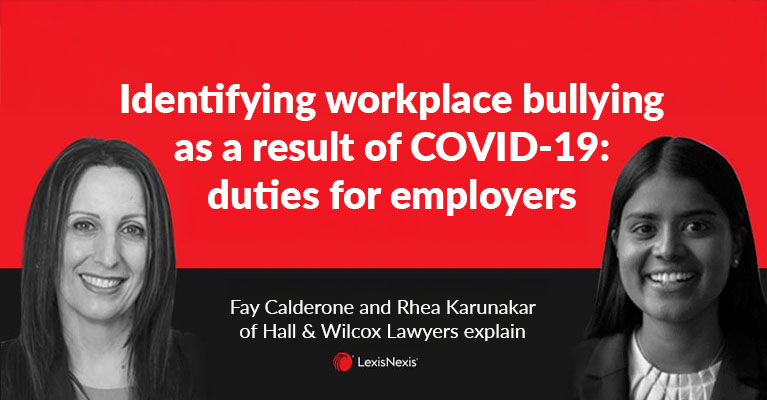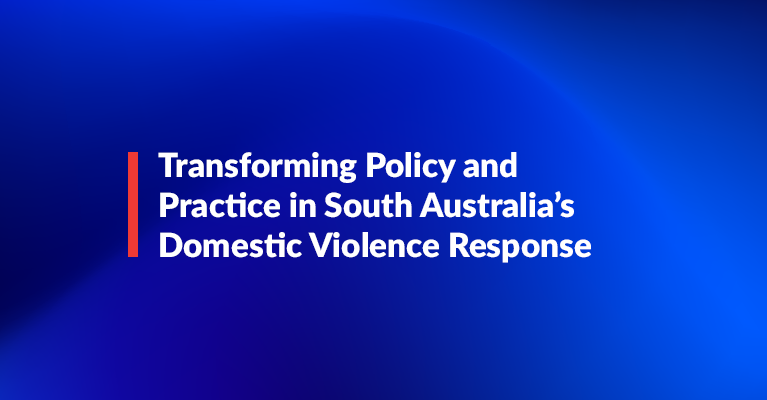As AI becomes more common in legal practice, many professionals are discovering an unexpected challenge: their tools don’t always work together. A typical day for an Australian lawyer might involve switching...
Kiren Chitkara , Legal Writer, Practical Guidance Succession Chloe Silvester , Head of General Practice, Practical Guidance November 2025 marks one of the most significant transformations in Australia...
For decades, LexisNexis ® has defined legal research. But research is just the beginning. Today, we’re transforming the entire legal workflow, evolving from a research provider into a technology partner...
Authored by Seeta Bodke, Head of Product - Pacific, LexisNexis® Legal & Professional We all know the stories: briefs cited fake cases. Submissions with phantom judgments. Entire arguments are built on...
Capital Monitor™ Editorial by Keely Garcia A single week in November 2023 saw four women lose their lives in South Australia amid domestic and family violence, an alarming record across any Australian...

With the increase in employees now working from home full time, employers need to be aware of new and additional pressures on individuals that can be significant risk factors for workplace bullying. Even when working from home, employees are at risk of workplace bullying, however employers should be aware that certain groups of employees may be at a greater risk of feeling marginalised at this time.
Employees with mental health conditions
Employees with mental health conditions for example may experience high levels of worry and anxiety during the pandemic. The constant uncertainty and change in restrictions and government directions can increase anxiety and panic, depression, anger and confusion. Financial stress and job uncertainty can also cause employees to have heightened feelings of exclusion and vulnerability. As a result, these employees may feel marginalised and potentially more susceptible to perceive certain behaviour as bullying.
Employees living alone and working alone
Employees who live alone and are working from home alone may experience greater isolation than employees who live with others. These employees are likely to feel social isolation deeply and may not be actively reaching out to managers and colleagues to maintain positive relationships. This can lead these employees to feel marginalised and excluded, potentially causing them to perceive certain conduct as bullying.
Employees with increased risk of infection
Employees with an increased risk of a serious infection may also experience greater pressure and anxiety regarding their return to the workplace and the time this is to occur. This can lead to these employees being more vulnerable to perceiving certain behaviour surrounding the return to the workplace as bullying as a result of these external pressures.
What can drive workplace bullying during the COVID-19 pandemic?
As bullying often occurs as a result of multiple drivers, the uncertainty and constant change as a result of the pandemic has led to an increased risk for drivers of bullying to result in or be perceived as bullying.
For example, role ambiguity can occur in areas where organisations have had to quickly adapt and change priorities as a result of the pandemic. These changes may lead to a lack of clear processes being implemented and employees being unclear as to how their position fits in the new work environment.
A change in work levels can also impact employees’ expectations and feelings of security in the workplace. Both an increase and decrease in work levels can lead employees to feeling targeted. For example, employees working from home may work longer hours as a result of losing their daily commute to the workplace. This can lead to deadlines becoming more urgent and expectations that these deadlines will be met.
Working from home can also heighten the capacity for employees to feel isolated and excluded. This can occur both intentionally and unintentionally. For example, team members may not be invited to certain meetings over Skype and Zoom or not included in certain “group” instant messages. These occurrences may be unintentional however, can lead to employees feeling marginalised and excluded.
Employees working from home are also likely to have fewer resources available to them and may lack certain resources needed to complete their work to the same efficiency as in the workplace. Timelines that were reasonable pre-pandemic may now be unreasonable as a result of various factors, such as slower internet speeds, challenges accessing documents or document management systems and the ability to contact decision makers.
Working from home can also result in a blur in workplace boundaries and appropriate behaviour. Technological platforms such as Skype and Zoom often lack the same formality as in person communication and can lead to employees being subject to potential cyber bullying.
Fair Work Commission’s response?
The Fair Work Commission has suggested that it will take any bullying behaviour while working from home seriously in its recent decision in Bailey v PCL Finance Pty Ltd; Illawarra Home Loans Pty Ltd t/as Illawarra Home Loans1 on 3 August 2020.
In this case, the Fair Work Commission stood by its decision to stand over rather than quash a worker’s stop-bullying application after hearing he perceived being excluded from his workplace and otherwise bullied while working remotely during COVID-19.
The worker first applied for a stop-bullying order in February, claiming that he was being bullied by a co-worker. In March, he told the Commission that the bullying behaviour had stopped but successfully requested that his case be stood over for a period of time in case the bullying resumed.
The worker’s stand over was extended to May and the worker told the Commission that he believed the bullying may continue or recur based on the way he was treated while working remotely.
Examples the worker provided included:
- management not responding to his emails which “excluded and isolated” him from his workplace
- being restricted from making decisions relating to his staff, and
- receiving a “nasty” email from his employer for taking work stationery home to use for work purposes
The Commissioner found it was appropriate to repeatedly stand the matter over as it could not have been established there was no risk of the bullying conduct continuing because the worker and his co-worker had not been working in the same office due to the pandemic.
The fact that the worker’s normal place of employment had changed did not automatically lead to the Bullying Application being quashed.
Compliance with WHS legislation
Employers and Human Resources professionals must also be aware of compliance requirements under the Work Health and Safety (WHS) legislation. Under WHS legislation, employers have a duty to ensure employees are not exposed to health and safety risks arising from work and this includes the risks pertaining to bullying.
Approved code of practice
An approved code of practice can serve as a practical guide for employers on how to comply with legal duties. An approved code of practice may be relied on by the court when a claim progresses to proceedings. The court may have regard to the code as evidence of what is known about a hazard or risk, risk assessment or risk control, and determining what was reasonably practicable in the circumstances to which the code relates.
NSW draft code of practice
In NSW, for example, the draft code of practice on managing the risks of psychological health is relevant to workplace bullying and is intended to:
- support compliance with the primary duty of care in s 19 of the Work Health and Safety 2011 (NSW) (WHS Act)
- provide guidance on existing duties and obligations under the WHS Act about risks to psychological health
- include known information about particular psychological hazards, risks to psychological health and control measures, and
- help in determining what is reasonably practicable in the circumstances by providing a recommended, reasonable and practical approach to manage these risks
The code can also be supplemented with other types of guidance materials specific to psychological health and workplace bullying.
Lessons for employers
It is essential that employers consider strategies to address the potential for workplace bullying in the remote workforce. These can include:
- respecting pre-COVID flexible work arrangements where appropriate
For example: ensuring that employees who may have had flexible work arrangements, such as a day off to look after their children, maintain this arrangement while working from home
- making arrangements where necessary to reduce stress and ensure that staff feel well equipped to work from home and perform their duties
- establishing clear boundaries and expectations so that employees are able to retain a balance between work and personal time while working from home
- monitoring the potential for exclusion to happen digitally, rather than in the physical workplace — overt bullying may now be covert
- ensuring compliance with duties under WHS legislation through the implementation of policies or an approved code of practice to manage the risks of bullying, and
- organising social interactions virtually or otherwise (where permitted) with employees that may be experiencing deeper social isolation to maintain and foster positive relationships and workplace culture
For more information about our Employment Law Bulletin, contact us below.






